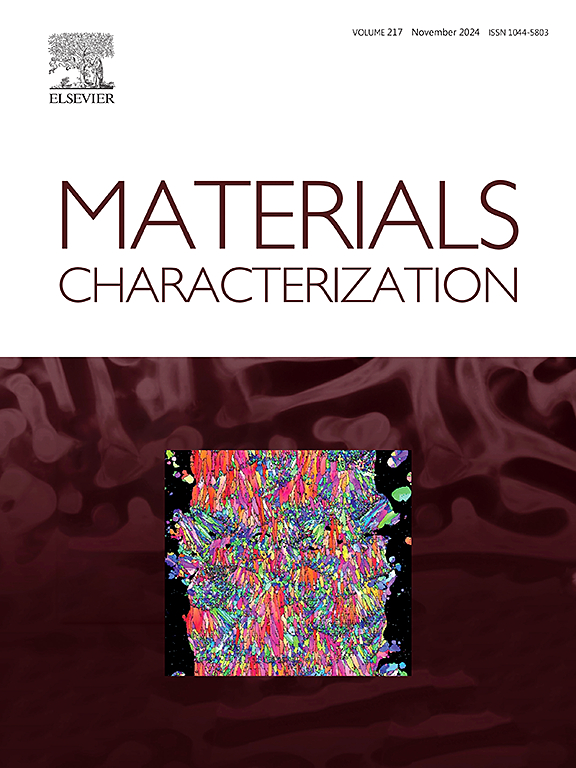纹理数据聚类算法的评价
IF 4.8
2区 材料科学
Q1 MATERIALS SCIENCE, CHARACTERIZATION & TESTING
引用次数: 0
摘要
在复杂零件设计的成形模拟中,材料织构起着至关重要的作用。然而,由于数据量大,空间分辨纹理的集成具有一定的挑战性。数据大小的减少可以通过中尺度方法来实现,例如粘塑性自洽(VPSC)模型。VPSC模型计算变形矩阵内的单个晶粒响应,因此晶粒总数对计算时间有很大影响。在这项工作中,提出了一种算法,可以累积减少颗粒数量,而不会引起模拟结果的显着偏差。我们的方法是基于k-means算法。这里使用了一个固定的半径,而不是设置k个簇的数量。簇半径的大小决定了数据约简的程度。通过织构研究和模拟拉伸试验的流动曲线,评估了聚簇误差对挤压成形的EN AW-6082合金的影响。这些模拟是使用VPSC方法以及与VPSC相结合的有限元模型进行的。结果为该算法的数据约简提供了一个上限。本文章由计算机程序翻译,如有差异,请以英文原文为准。
Evaluation of a clustering algorithm for texture data
In forming simulations of complex part designs, material texture can play a crucial role. However, spatially resolved integration of texture is challenging due to large data size. A reduction in data size can be achieved by meso-scale approaches, such as the viscoplastic self-consistent (VPSC) model. The VPSC model calculates individual grain responses within a deformed matrix, therefore the total number of grains has a substantial impact on the computation time. In this work, an algorithm is presented that cumulatively reduces the number of grains, without causing significant deviations in the simulation results.
Our approach is based on a k-means algorithm. Instead of setting the number of k clusters, a fixed radius is used. The size of this cluster radius determines the degree of data reduction.
The impact of clustering-induced errors is evaluated for an extruded EN AW-6082 alloy via texture investigations and the flow curves of simulated tensile tests. These simulations were performed using the VPSC approach as well as a finite element model in combination with VPSC. The results provide an upper limit for data reduction with the presented algorithm.
求助全文
通过发布文献求助,成功后即可免费获取论文全文。
去求助
来源期刊

Materials Characterization
工程技术-材料科学:表征与测试
CiteScore
7.60
自引率
8.50%
发文量
746
审稿时长
36 days
期刊介绍:
Materials Characterization features original articles and state-of-the-art reviews on theoretical and practical aspects of the structure and behaviour of materials.
The Journal focuses on all characterization techniques, including all forms of microscopy (light, electron, acoustic, etc.,) and analysis (especially microanalysis and surface analytical techniques). Developments in both this wide range of techniques and their application to the quantification of the microstructure of materials are essential facets of the Journal.
The Journal provides the Materials Scientist/Engineer with up-to-date information on many types of materials with an underlying theme of explaining the behavior of materials using novel approaches. Materials covered by the journal include:
Metals & Alloys
Ceramics
Nanomaterials
Biomedical materials
Optical materials
Composites
Natural Materials.
 求助内容:
求助内容: 应助结果提醒方式:
应助结果提醒方式:


